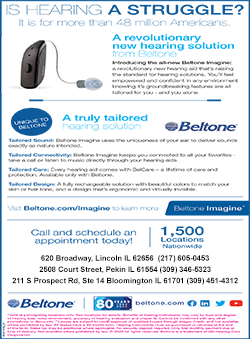|
 The United States reached 10.2 million inoculations one day after
the CDC and Trump administration gave new guidance to U.S. states on
who should receive the shots first. Strict rules putting healthcare
workers first in line had slowed the rollout. Now states are urged
to vaccinate anyone over 65 as well. The United States reached 10.2 million inoculations one day after
the CDC and Trump administration gave new guidance to U.S. states on
who should receive the shots first. Strict rules putting healthcare
workers first in line had slowed the rollout. Now states are urged
to vaccinate anyone over 65 as well.
California moved on Wednesday to do just that, designating all
individuals 65 and older eligible to begin receiving vaccines,
adding 6.6 million people to the rolls of those qualified to be
immunized, Governor Gavin Newsom said.
The move bumps senior citizens, regardless of whether they have
underlying medical conditions, to the top of the priority list for
vaccine recipients, just behind front-line healthcare workers and
residents and staff of nursing homes.
California, like many states, has struggled to use up as much
vaccine as it received in initial allotments from the federal
government, administering only about a third of the nearly 2.5
million doses shipped to the state as of Monday.

Newsom has set a goal of inoculating 1 million more Californians by
the end of this week with the first shot of the two-dose vaccine.
He also said the state would launch a new system next week for
notifying people when they become eligible for the vaccine, and to
register for notification by email or text.
The latest push to spur the most ambitious mass immunization
campaign in U.S. history came as the nation set a new record for
coronavirus deaths in one day, with 4,336 fatalities on Tuesday,
according to a Reuters tally.
Health and Human Services Secretary Alex Azar on Tuesday said the
administration was releasing its full stockpile of two vaccines
approved for emergency use, including some that had been held in
reserve to make sure that second doses could be given on schedule.
Nearly 30 million doses of the vaccines, manufactured by Moderna and
Pfizer with its German partner BioNTech, have been released to U.S.
states, which have used only about one-third of them.
Johnson & Johnson said on Wednesday that the pharmaceutical company
was on track to roll out its single-shot vaccine in March.
In an interview with Reuters on Tuesday, Dr. Paul Stoffels also said
J&J expected to meet its stated target of delivering 1 billion doses
of its vaccine by the end of this year as the company ramps up
production.
Political leaders and health officials nationwide have scrambled in
recent days to push out more vaccines to their residents, many
lowering the age requirement to 65. California and New York have
both pledged to inoculate one million residents this month.
[to top of second column] |
 NEW YORK SEEKS MORE VACCINE
In New York City, Mayor Bill de Blasio, a
Democrat, said on Wednesday that short supplies
of the vaccine could hamper efforts to reach the
city's inoculation goals. "We
need the federal government, the state government and the
manufacturers to step up and get us more supply immediately," de
Blasio told a news conference.
The nation's most populous city is adding vaccination sites across
its five boroughs, including its two Major League Baseball stadiums.
"I confirmed with our healthcare team yesterday that even with
normal supplies that we expect to have delivered next week, we will
run out of vaccine at some point next week, unless we get a major
new resupply," de Blasio said.
Public health officials say so far no U.S. state has used up its
supply of the vaccines.
At the Javits Center in Manhattan, which was pressed into service as
a temporary hospital in April, health officials said they were
prepared to vaccinate 10,000 people in 12 hours, with the ability to
ramp up to 25,000 in a 24-hour period.
New York has recorded nearly 40,000 coronavirus fatalities since the
pandemic broke out there in March, more than any other U.S. state.
Nationwide more than 380,000 people have died of COVID-19. A total
of 22.7 million have been infected during that time.
The number of COVID-19 patients requiring hospitalization may have
leveled off at least temporarily, according to a Reuters tally,
although public health officials warned that further spread may
still be seen from holiday gatherings.
California, the nation's most populous state, has seen new
hospitalizations drop this week, according to health officials. More
than 30,000 Californians have so far died of COVID-19 related
illness.

The recent emergence of a more infectious variant of the virus first
seen in the United Kingdom has made efforts to accelerate
vaccinations all the more important. The so-called UK variant has so
far been confirmed in at least 10 U.S. states.
(Reporting by Peter Szekely and Andrew Hofstetter in New York, Julie
Steenhuysen in Chicago and Dan Whitcomb and Steve Gorman in Los
Angeles; Editing by Cynthia Osterman, Alistair Bell and Catherine
Evans)
[© 2021 Thomson Reuters. All rights
reserved.] Copyright 2021 Reuters. All rights reserved. This material may not be published,
broadcast, rewritten or redistributed.
Thompson Reuters is solely responsible for this content |